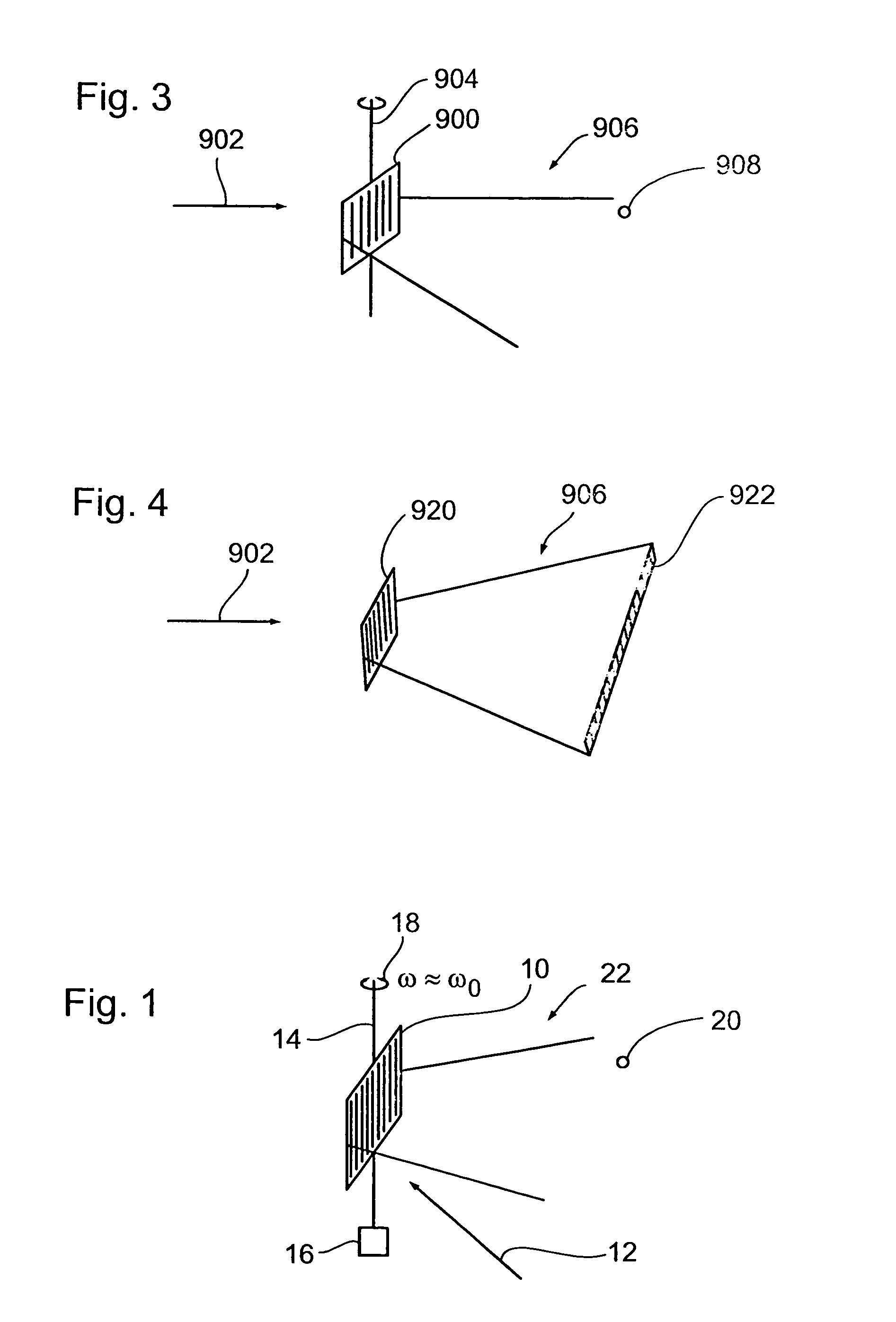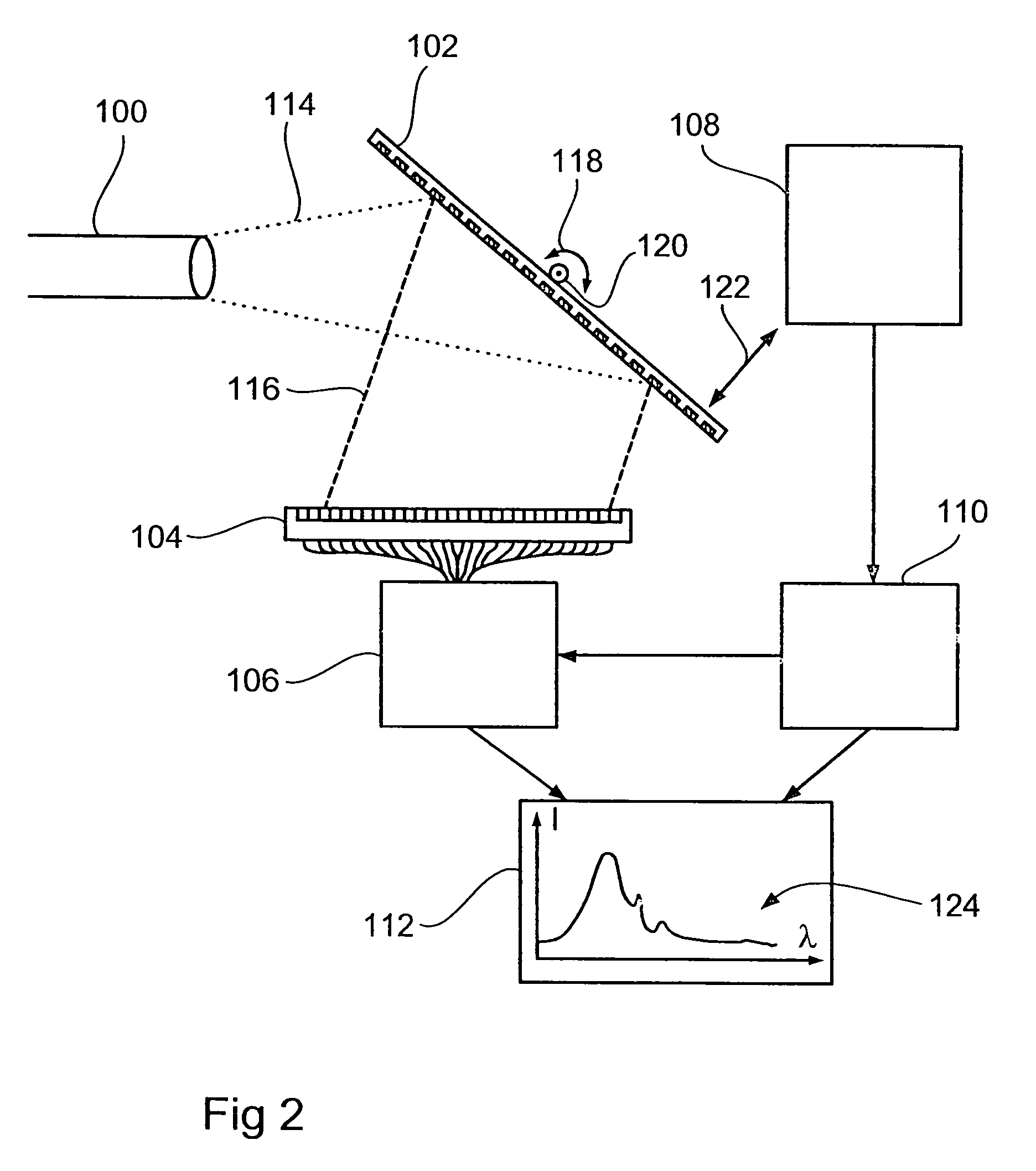Spectrometer
a spectrometer and spectrometer technology, applied in the field of spectrometry, can solve the problems of high cost of such spectrometers with fixed gratings, high cost of such spectrometers, and additional costs per slave module, and achieve the effect of satisfying spectral resolution, satisfying spectral detection range, and low cos
- Summary
- Abstract
- Description
- Claims
- Application Information
AI Technical Summary
Benefits of technology
Problems solved by technology
Method used
Image
Examples
Embodiment Construction
[0024]First, with regard to FIG. 1, a simplified representation of a spectrometer is described according to an embodiment of the present invention. The spectrometer of FIG. 1 comprises a movable grating 10, which receives an incident light beam 12, whose spectral distribution is to be determined. The movable grating 10 is designed as vibratably suspended mirror with a grating structure and is, in the present case, vibratably rotatably mounted and suspended, respectively, around an axis 14. The suspension (not shown) of the movable grating 10 defines a restoring force, which depends on the deflection of the movable grating 10 from the resting position. The suspension consists, for example, of two ridges, which support a frame of the grating (in the FIG. from the top and the bottom) along the axis 14 at two opposing side centers, wherein the restoring force corresponds to the torsion force, which is established by torsion of the ridges during vibration. Further, a different suspension...
PUM
 Login to View More
Login to View More Abstract
Description
Claims
Application Information
 Login to View More
Login to View More - R&D
- Intellectual Property
- Life Sciences
- Materials
- Tech Scout
- Unparalleled Data Quality
- Higher Quality Content
- 60% Fewer Hallucinations
Browse by: Latest US Patents, China's latest patents, Technical Efficacy Thesaurus, Application Domain, Technology Topic, Popular Technical Reports.
© 2025 PatSnap. All rights reserved.Legal|Privacy policy|Modern Slavery Act Transparency Statement|Sitemap|About US| Contact US: help@patsnap.com



